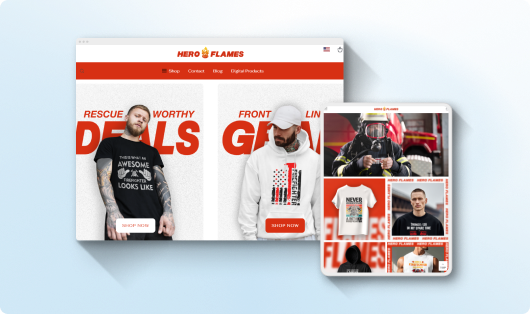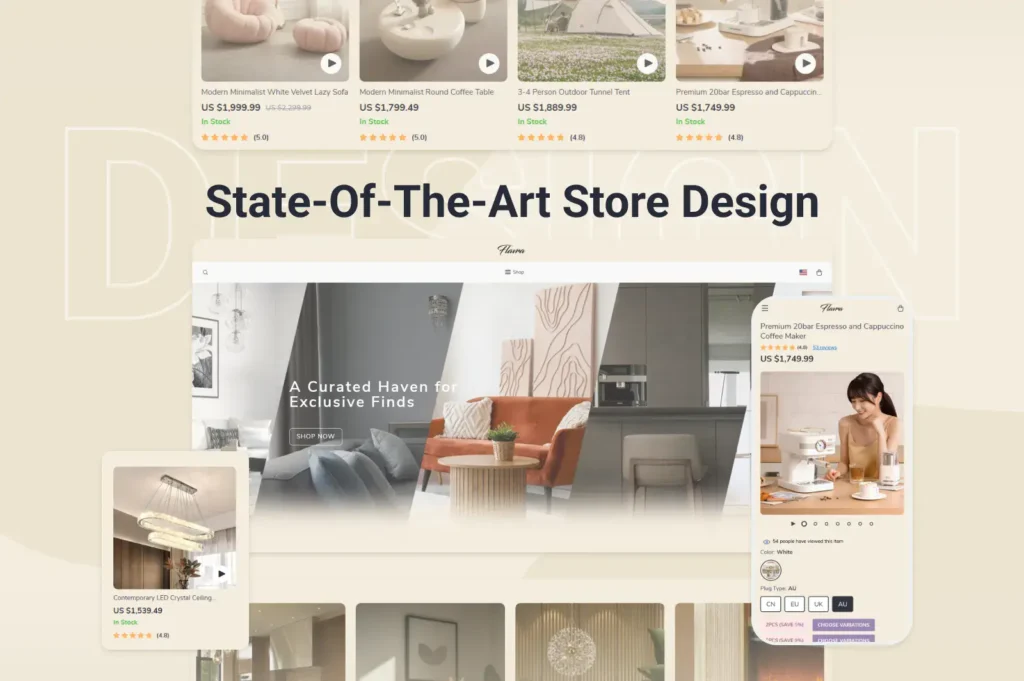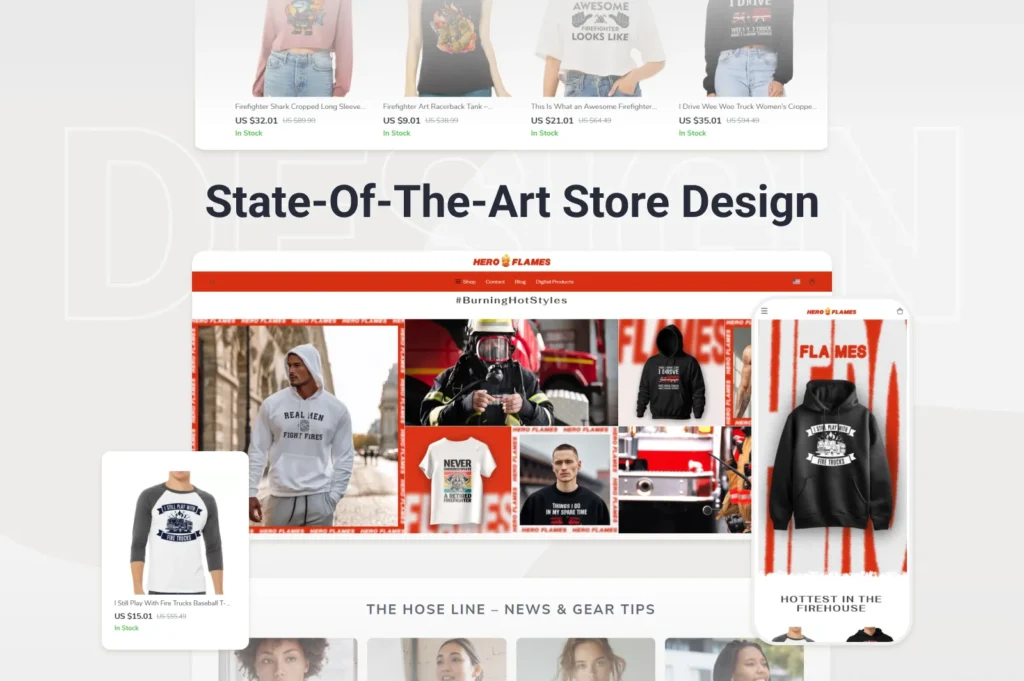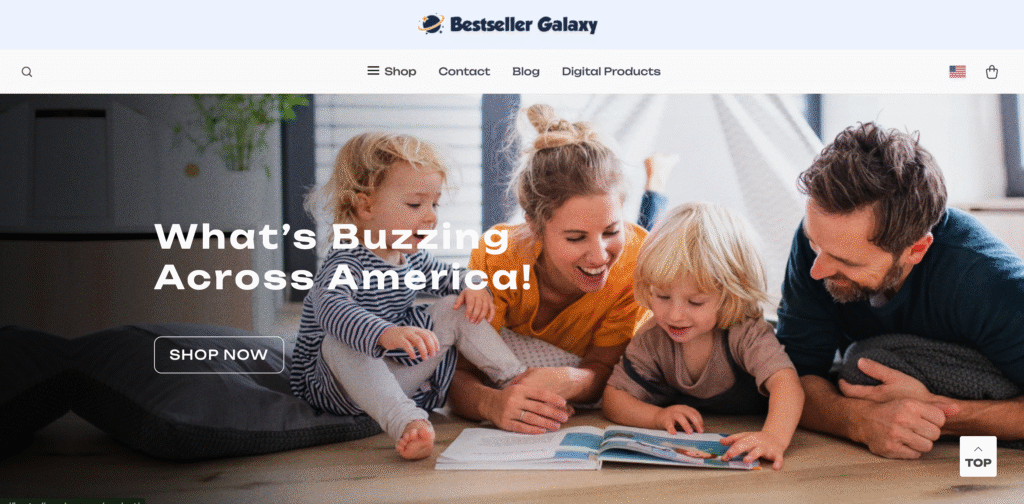You’ve just bought your first eComm store. Now you’re ready to roll up your sleeves and start creating content that actually does something: builds trust, pulls in traffic, makes people stick around. But here’s the catch — if you’re not consistent, it won’t work. A few posts here and there might get some likes, sure, but long-term growth? That takes rhythm, not random bursts of inspiration.
That’s where content marketing comes in. It replaces posting for the sake of posting with telling your brand’s story in a way that attracts the right people and keeps them coming back. And if that sounds like a lot, well, that’s because it is.
Luckily, Offiro makes it easier: our content marketing service delivers expert articles and social posts from day one, giving your new store a professional voice and a plan that actually sticks.
In the first part of this article, we’ll break down what content marketing really means, why planning your content matters more than you think and what you need to make your first content plan. Part 2 of this guide will be more practical: we’ll tell how to build a simple content plan step by step.
1. What Is Content Marketing ( and Why It’s More Than Just Posting Online)

Let’s start with the basics. Content isn’t just words on a screen or pretty pictures with hashtags — it’s everything you or your brand puts out there to connect with real humans. And content marketing is the art ( and sometimes chaos) of using that content strategically: to attract, engage, and keep your audience around long enough to actually care.
However, great content gives before it asks. It has to deliver real value. And yes, it should be free. Sounds counterintuitive when you’re running a business, right? But think of it this way: every time you help, teach, or entertain someone without charging them, you’re building trust capital. And that kind of loyalty is worth more than any single sale.
To make things easier, here’s a quick cheat sheet for the types of content you can mix into your strategy:
| Type | What to Use It For | Format Examples |
| Practical | Show expertise and teach your audience something useful | How- to guides, checklists, expert opinions, “Top 10” lists |
| Selling | Convert readers into buyers | Product reviews, customer success stories |
| Trust-building | Tell readers about your store and show the people behind it | Inside stories, personal opinions, behind-the-scenes posts |
| Entertaining | Make readers smile and build emotional connection | Competitions, sweepstakes, light-hearted surveys |
| Viral | Evoke emotions and spark shares | Short stories, trend-based posts, “Did you know?” hooks |
| Engaging | Encourage participation and user-generated content | Quizzes, FAQs, discussions, polls |
No matter which type you choose, always ask yourself one thing before hitting “publish”: what will my reader get from this?
Try this simple test — complete the sentence: “My content helps readers to…”
For example, here’s my take for this very article:
My content helps readers to plan their marketing better and stop wasting time guessing what to post next.
That one sentence keeps your strategy on track and your content purposeful.
2. Why Planning Your Content Is the Secret Sauce of Marketing

Let’s be honest — ideas hit at the weirdest times. In the shower, halfway through a meeting, sometimes right as you’re falling asleep. And unless you’ve got a solid content plan, those sparks tend to vanish. A content plan is basically your map for everything you want to create and publish: what, when, and why. It keeps your creativity organized ( and your sanity mostly intact).
But it’s more than a glorified to-do list. A good plan helps you stay consistent, avoid burnout, and keep your content working toward real business goals instead of just filling up your feed. Here’s how it actually helps:
- Keeps track of your ideas. No more scribbled notes in five different apps. When every concept has its place, you can spot patterns, expand the best ones, and save the rest for later
- Helps you set goals— and stick to them. Maybe you want to grow traffic by 20% or publish two blog posts a week. Writing it down turns “someday” into “let’s go”
- Makes content creation ( and publishing) way smoother. When you already know what you’re writing and when it’s going live, you stop losing time to last-minute panic. Plus, your audience starts expecting and trusting your rhythm
- Shows what to keep in-house and what to delegate. Some pieces you can whip up yourself, others deserve a professional touch. That’s where Offiro’s team steps in polishing, expanding, or ghostwriting content so it feels top-tier without you losing weekends over it
In short, planning gives your creativity direction. It’s the difference between “posting whatever” and building an actual story your brand can grow on.
3. Tools to Structure Your Content Plan

Okay, so you’ve got your ideas and your goals—now you need a system that won’t crumble under the weight of your brilliance ( and deadlines). The good news? You don’t need fancy software or a marketing degree to keep your content plan tidy. You just need a tool that fits your brain. Here are three solid options, each with its own quirks and perks.
1. Mind Maps (Xmind, Miro, or even Notion whiteboards)
Sometimes your ideas aren’t ready to live in neat boxes yet—they need space to sprawl. Mind maps are perfect for brainstorming themes, connecting related topics, and spotting future series before they even exist.
Pros:
- Visually satisfying (great for creative thinkers)
- Makes it easy to see relationships between ideas
- Perfect for early-stage planning or when you’re feeling “idea heavy” but “structure light”
Cons:
- Not great for long-term tracking
- Harder to manage deadlines or publishing dates
- Can get messy fast if you’re not careful (looking at you, 47 floating sticky notes)
2. Online Calendars (Google Calendar, Trello, ClickUp, etc.)
If you like seeing your week at a glance, an online calendar is your best friend. You can slot in deadlines, add reminders, color-code post types, and share with your team— so no one’s left wondering when the next post is due.
Pros:
- Keeps you consistent with posting schedules
- Integrates easily with reminders and notifications
- Great for teams or people managing multiple platforms
Cons:
- Not ideal for deep content details ( like outlines or keyword lists)
- Can feel rigid if you prefer flexible planning
- A bit overwhelming once you start color-coding everything
3. Excel or Google Sheets
Ah, the classic spreadsheet— the unsung hero of content planning. Not fancy, but it works. Especially if you love structure and want everything in one place: titles, dates, authors, links, goals, even post performance later on.
Pros:
- Simple, accessible, and customizable
- Lets you track metrics alongside your content (hello, ROI)
- Great for long-term archives—you’ll thank yourself later
Cons:
- Not very visual (you won’t get those “Pinterest board” vibes)
- Can get cluttered if you don’t keep it clean
- Manual updates, unless you automate (which you should, eventually)
Pick what fits your workflow, not what looks cool on a productivity blog. The best content plan is the one you actually use.
Think of Offiro’s marketing team as your behind-the-scenes crew. We’ll plan and produce your content, keep your blog updated, and help you show up in the right places at the right time. You get expert-level marketing and consistent visibility— without the constant stress of doing everything solo.
4. What to Include in Your Content Plan

Once you’ve picked your tool of choice, it’s time to actually fill that thing in. Think of your content plan as your command center: it should tell you what’s coming, where it’s going, and how it’s performing. Keep it detailed enough to stay on track but simple enough so you’ll actually update it. (Because, let’s be real, complicated systems die faster than half-written blog drafts.)
Here’s what your plan should definitely include:
- Draft ready date – when the post or video should be finished. It keeps everyone accountable and stops “I’ll do it later” from becoming a lifestyle
- Publishing date – the day it goes live. Seeing these on a timeline helps you balance posting frequency across channels
- Category – helps you spot patterns. Are you posting too many sales updates and not enough practical tips? The category column will tell you
- Working title – doesn’t have to be final, just a hook that reminds you what the post’s about
- Platform – specify where it’s going: your own blog, a partner blog, or maybe LinkedIn or Medium
- Format – is it a long read, a short video, a carousel, or a newsletter? Different formats need different prep
- Visual – link your Figma draft, or add a note about which photos or videos will be used. Visual consistency = brand trust
- Author – if you have a team ( or if it’s just you wearing twelve hats), mark who’s responsible
And if you want to take things one step further, add a performance block. It’ll help you see what’s actually working—not just what looks nice in the calendar:
- Link on site – quick access to published content
- Number of likes – check weekly or monthly to see what’s resonating
- Shares and comments – social proof in action
- Ad effectiveness – if you promoted the post, track impressions, clicks, and cost per result
Once you start logging these numbers, patterns emerge. You’ll notice which posts draw real engagement, which ones just sit there quietly, and which ones deserve a little ad boost. Over time, this turns your content plan from a simple schedule into a full-blown growth tool.

5. Wrapping Up Part 1
By now, you’ve got the skeleton of a solid content plan—dates, formats, visuals, goals, and even a place to track how well each post performs. That’s the backbone of consistent, smart marketing: knowing what’s coming and why it matters.
But the real magic happens when you bring it all together— when those neatly listed ideas turn into an actual flow of content that works like clockwork. That’s what we’ll cover in Part 2: how to build your content plan from scratch, step by step, and keep it running without burning out.
You’ll learn how to brainstorm strategically, set up a content calendar that fits your workflow, and turn creative chaos into a repeatable process that actually feels good to manage.
If you’d rather skip the trial-and-error stage, Offiro’s marketing team can handle it for you. Our experts will create professional articles and posts, publish them directly to your store’s blog, and make sure your content gets noticed from day one. It’s a full-scale content marketing setup done for you, so you can focus on running your business while your brand grows in the background.
Ready to take the first step? Contact our experts today to find the perfect store for you and start 2025 with a business that’s ready to grow.

















